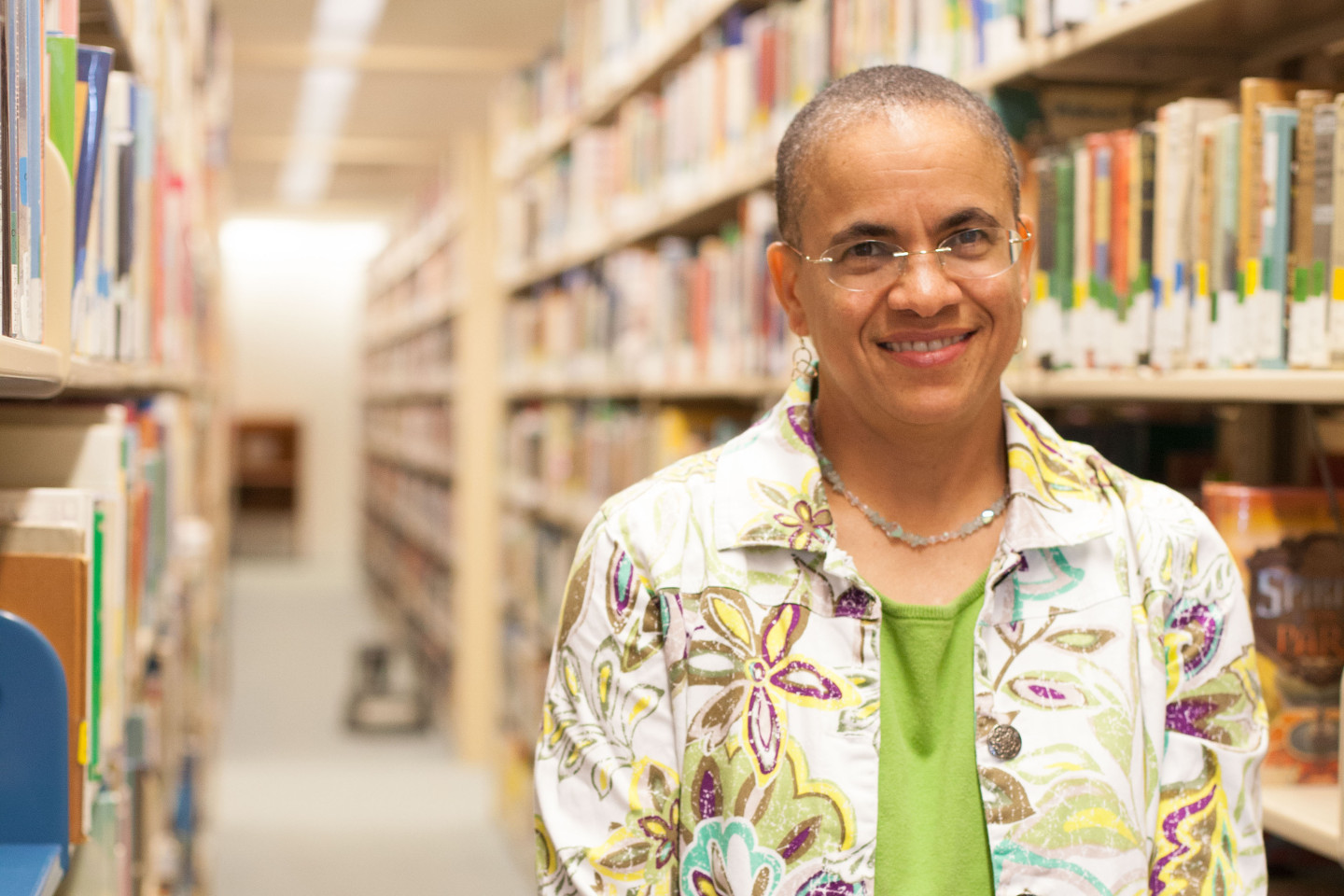The books children read have a powerful ability to shape how they see and interpret the world. That’s something Michelle Martin, Beverly Cleary Professor for Children and Youth Services at the iSchool, knows well.
Some books are mirrors, reflecting readers’ experiences and helping them understand their own lives. Other books are windows, helping readers empathize with people whose stories are different than their own. Both books are important to young readers.
Martin turned that concept into a hands-on lesson in her first term of teaching at the iSchool. In her class, Multicultural Resources for Youth, Martin asked students to complete a project that involved children, diverse books for youth and a community partner. Because the class was online, the projects stretched across the country and as far as South America.
Martin hoped the project would expose her students — and the youth they serve — to new ideas while fostering community connections.
“It’s important for a library to be embedded in a community,” she said. “If you don’t know who you are serving and don’t have connections with them, how do you serve them?”
Young learners
Second-year Master of Library and Information Science student Melody Leung knew she wanted to work in youth services before she even joined the iSchool. She also had an interest in multicultural stories.
“This course was the perfect one for me to put the two things together,” she said.
Leung, who works part time at the Snohomish Public Library, used the story times she was already offering but picked books that would be windows and mirrors.
Leung’s sponsor, Nate Cushman, initially worried that Leung’s proposal would strain her limited time. Cushman and Leung were pleased to discover that preparing a story time that made diversity a centerpiece didn’t take her any longer, and she incorporated the new elements seamlessly.
Cushman said Leung is confident and capable, and he was pleased to see how well her project came together.
“Melody demonstrated the effectiveness of subtly incorporating diversity elements into story times, without making an obvious point of what she was doing,” Cushman said.
Cushman said that Leung realized the importance not only of diverse programming for the children, but also addressing the parents specifically. For instance, Leung explained the concept of windows and mirrors when choosing books.
As Leung prepared her project, she was nervous about how the new elements would be received. She wanted them to feel natural, and not intrusive.
For one of her story times, she focused on the Lunar New Year, a time when families come together. She read the book “One Family,” by George Shannon, a counting book that features a variety of families, including single parents, parents of the same gender and families of mixed races.
Leung learned a powerful lesson about self-censorship during her project. When considering displaying the book “Heather has Two Mommies” by Lesléa Newman, she worried the book would invite criticism. In the end, Leung spoke with the other librarians and decided it would be best to put it out there. She knew that, for some families, that book would be a mirror, and that made it worth displaying. She got no negative feedback, which encouraged her and the seasoned librarians she worked with.
Combating the single story
Staci Fox, a librarian at an international school in Bogota, Colombia, ran an elective period for 13- and 14-year-old students while working on her MLIS in the online program. For the Multicultural Resources project, Fox worked on cultural competency with her students. She introduced them to the idea of the single story — in which a single stereotype is used to characterize an entire group of people.
She began by showing Chimamanda Ngozi Adichie’s 2009 TED talk, “The Danger of a Single Story.”
“What really struck me,” she said, “was that it really hit home with them.”
She said her students had experienced being stereotyped when they travel. People would assume that, because they were Colombian, they were associated with drugs.
Fox curated 22 books from 18 countries, choosing books that went beyond familiar narratives. Her students read the books and created promotional materials for them.
Some of the books she included were Malala Yousafzais’s “I am Malala: The Girl Who Stood up for Education and was Shot by the Taliban” and Sherman Alexie’s “The Absolutely True Diary of a Part-Time Indian.” Alexie’s book was a hit with one of her students, who used a cartoon illustration to promote it.
“It was a wonderful opportunity,” Fox said. “It gave me a pathway to do the kind of project I’ve always wanted to do.”
Fox graduated after finishing the class. She planned to return to the San Francisco Bay area and hopes to continue doing similar work.
Close to home
Andrew Wagster kept his project close — just a few blocks away from home, in fact. Wagster ran a fundraiser to purchase diverse books for the Boys & Girls Club of North Seattle. He bought 40 books for the club. Wagster is an MLIS student in the online program; he plans to graduate in 2018.
He talked with club members, discussed their needs and selected appropriate books. Wagster said he used the skills he’d learned in the class and at the iSchool to curate the books.
In doing his own reading for Martin’s class, the words of Walter Dean Myers stayed with him. Myers wrote that “as a black teenager in a white-dominated world,” the stories he was reading weren’t his stories. They didn’t resonate. That drove Myers away from reading until he found books that reflected his own experiences.
Wagster found the essay very powerful.
“It is crucially important for children and teenagers to be able to see themselves in the stories that they read,” he said.
The books Wagster carefully curated now belong to the club, where he hopes kids will find a book that reflects their own experiences — a book that just might spark a lifelong love of reading.
